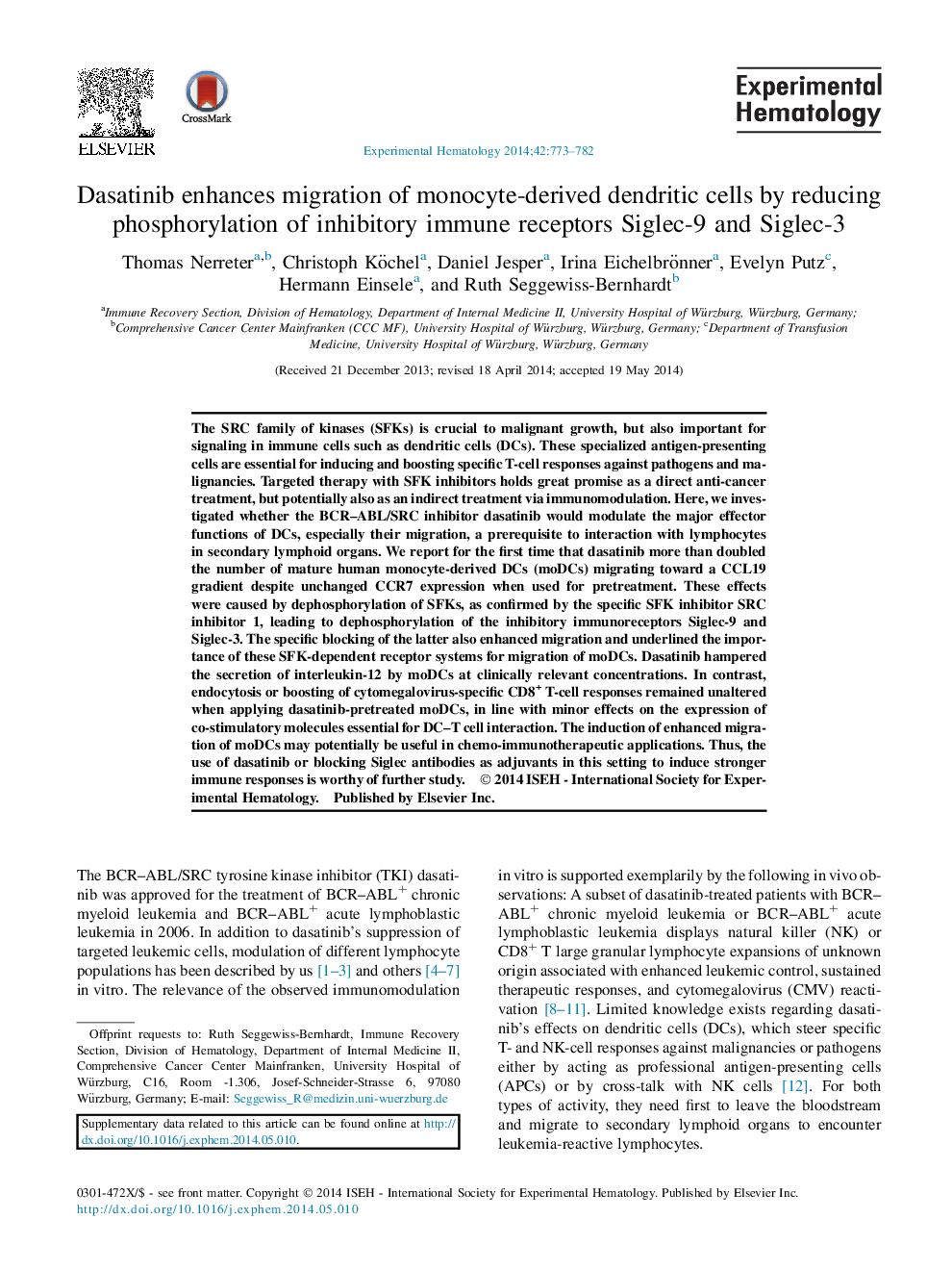| Article ID | Journal | Published Year | Pages | File Type |
|---|---|---|---|---|
| 2133403 | Experimental Hematology | 2014 | 13 Pages |
Abstract
The SRC family of kinases (SFKs) is crucial to malignant growth, but also important for signaling in immune cells such as dendritic cells (DCs). These specialized antigen-presenting cells are essential for inducing and boosting specific T-cell responses against pathogens and malignancies. Targeted therapy with SFK inhibitors holds great promise as a direct anti-cancer treatment, but potentially also as an indirect treatment via immunomodulation. Here, we investigated whether the BCR-ABL/SRC inhibitor dasatinib would modulate the major effector functions of DCs, especially their migration, a prerequisite to interaction with lymphocytes in secondary lymphoid organs. We report for the first time that dasatinib more than doubled the number of mature human monocyte-derived DCs (moDCs) migrating toward a CCL19 gradient despite unchanged CCR7 expression when used for pretreatment. These effects were caused by dephosphorylation of SFKs, as confirmed by the specific SFK inhibitor SRC inhibitor 1, leading to dephosphorylation of the inhibitory immunoreceptors Siglec-9 and Siglec-3. The specific blocking of the latter also enhanced migration and underlined the importance of these SFK-dependent receptor systems for migration of moDCs. Dasatinib hampered the secretion of interleukin-12 by moDCs at clinically relevant concentrations. In contrast, endocytosis or boosting of cytomegalovirus-specific CD8+ T-cell responses remained unaltered when applying dasatinib-pretreated moDCs, in line with minor effects on the expression of co-stimulatory molecules essential for DC-T cell interaction. The induction of enhanced migration of moDCs may potentially be useful in chemo-immunotherapeutic applications. Thus, the use of dasatinib or blocking Siglec antibodies as adjuvants in this setting to induce stronger immune responses is worthy of further study.
Related Topics
Life Sciences
Biochemistry, Genetics and Molecular Biology
Cancer Research
Authors
Thomas Nerreter, Christoph Köchel, Daniel Jesper, Irina Eichelbrönner, Evelyn Putz, Hermann Einsele, Ruth Seggewiss-Bernhardt,
